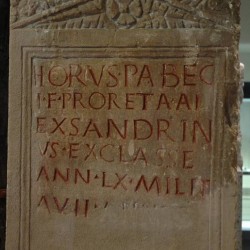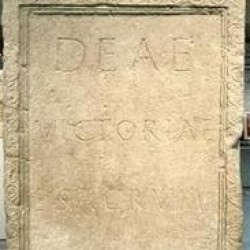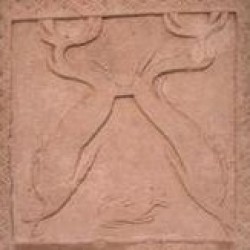Köln-Alteburg
Q1430260Köln-Alteburg: naval base of the Roman Rhine fleet.

In 37 or 19 BCE, the Romans transferred the Ubians from the east bank of the Rhine to the west bank, where they gave them a city called Ara Ubiorum, "altar of the Ubians". Initially, there were two legions stationed on this site (the Nineteenth was one of them), and after the battle in the Teutoburg Forest in 9 CE, I Germanica and XX Valeria Victrix are known to have stayed at Cologne, but after 28, the town was no longer in use as a military settlement. Instead, it became the capital of Germania Inferior and in 50, it was promoted to the rank of colonia and received a new name: Colonia Claudia Ara Agrippinensium, from which the German name Köln and the English Cologne are derived.
Although the city was now no longer a military base, the Roman fleet maintained a naval base, about four kilometers south of Cologne, situated on a hill of about 18 meters high. The site, which is comparatively large (about 7 ha), was founded at the time of Cologne's promotion to the status of colonia and is now called the Alteburg, "the ancient castle". Although the Rhine fleet was created for naval offensives on the North Sea, the ships were almost never used for warfare at all. Instead, they had to control the Rhine, impress the Germanic tribesmen on the other bank, and transported troops and heavy stones.
In c.100, the site was surrounded by a wall of stone. Archaeologists have discovered the barracks of the marines, which were originally made of wood but later constructed from stone as well. The inhabitants - probably some 1,000 men - lived in greater luxury than the legionaries: traces of frescoes have been found in the rooms of the Alteburg.
The shipsheds are almost unique in the northern part of the Roman empire. The only parallels north of the Alps are (to the best of the present author's knowledge) at Haltern on the Lippe and at Velsen in Holland. An interesting detail is the discovery of loom weights and other objects related to the production of textile. This is not very common in a military settlement, but of course the Alteburg must have offered room to velarii ("sail makers").

The site was probably abandoned after the Frankish invasion of 260. Today, the hill is occupied by expensive villas and the Roman remains are invisible. The only memories are street names like Auf dem Römerberg and Im Römerkastell ("On the Roman hill" and "In the Roman fort").
 Köln-Alteburg, Tomb of the steersman Horus |
 Köln-Alteburg, Naval monument (front) |
 Köln-Alteburg, Naval monument (back) |
 Köln-Alteburg, Tombstone of Verecundus |